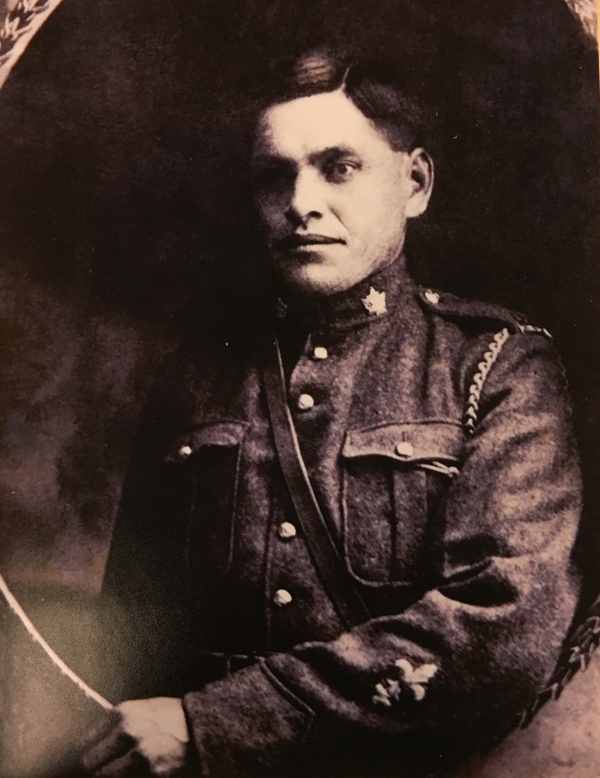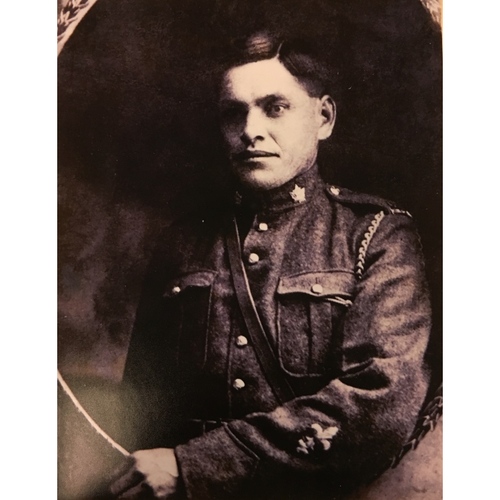
Source: Link
NORWEST, HENRY, soldier; b. early 1880s in Fort Saskatchewan (Alta), son of Louis Norwest and Geneviève Batoche; m. with children; d. 18 Aug. 1918 near Amiens, France.
Henry Norwest was a Cree from the vicinity of Edmonton. His father lived for a time with the band led by Kiskaquin (Bobtail); in 1885 he accepted scrip and was subsequently enfranchised. Henry Norwest worked as a saddler and cowpuncher. After the outbreak of war in 1914, he joined the Canadian Expeditionary Force as a private at Wetaskiwin on 2 Jan. 1915, using the name Henry Louie, and served with the 3rd Canadian Mounted Rifles. Discharged for drunkenness, he was briefly employed by the Royal North-West Mounted Police before re-enlisting in the CEF as a private on 8 Sept. 1915 in Calgary. His unit, the 50th Infantry Battalion, left for England two months later and proceeded to France in August 1916.
Norwest became the greatest sniper among the Canadian troops at the front, and possibly the best in the British forces. He was officially credited with 115 observed hits, the highest figure recorded to that time in the annals of the British army. According to enemy prisoners of war, his reputation was known to the German troops and they feared him. Being from the woodland area of central Alberta, Norwest probably had perfected his marksmanship from childhood and had developed patience as a hunter.
Because Norwest claimed a hit only when his observer was present to confirm it, it is possible that his tally stands at more than 115 men. Passionately dedicated and adept at camouflage, he had enormous patience and perseverance: using a rifle specially fitted with a telescopic lens, he would wait for days in no man’s land to catch his man and never fired unless he was sure he could not be seen. At night he often crossed the enemy lines to make a kill in the early hours. He was awarded the Military Medal in 1917.
As a result of his fame, a reasonably full description of Norwest exists, which is rare for native soldiers of the first war. He was said to be reserved rather than effusive, although he mixed easily with the other troops at the front. Whatever the situation, his calmness of manner and detachment never deserted him, and he served as an inspiration to his fellows. Rather short but strongly built, he had “a pleasant face, and a clear and remarkably steady eye.” One companion noted that his eyes were “like discs of polished black marble . . . enigmatic yet hypnotic, strangely piercing yet mellowly compassionate, deadly serious yet humourously twinkling. One could never forget them.” His nickname Ducky was given to him after he had explained to his comrades that while on leave in London he had had to “duck” the girls there.
Just prior to the last drive at Amiens in August 1918, Norwest was sent behind the lines. At his request, however, he joined the attack and made himself invaluable in eliminating snipers and disabling machine-gun posts. Less than three months before the end of the war, his luck gave out. On 18 August a German marksman shot him through the head as he was searching for snipers who were threatening the Canadian advance posts. On his temporary grave marker his comrades inscribed, “It must have been a damned good sniper that got Norwest.” He was posthumously awarded a bar to his Military Medal “for Gallantry in the Field.”
Norwest was reinterred in Warvillers Churchyard Extension, near Amiens. One of his sniper rifles is on exhibit at the King’s Own Calgary Regiment Museum, Museum of the Regiments, in Calgary.
Glenbow Museum (Calgary), Military hist. coll. area, file information on Henry Norwest (drawn from scrip return records by Prof. John E. Foster of the Univ. of Alta, Edmonton). NA, RG 150, Acc. 1992–93/166, no.435684. Calgary Herald, 30 Oct. 1918. D. C. Scott, “The Canadian Indians and the Great World War,” in Canada in the Great World War; an authentic account of the military history of Canada from the earliest days to the close of the war of the nations (6v., Toronto, [1917–20]), 3: 285–328. V. W. Wheeler, The 50th Battalion in no man’s land (Calgary, 1980).
Cite This Article
James Dempsey, “NORWEST, HENRY,” in Dictionary of Canadian Biography, vol. 14, University of Toronto/Université Laval, 2003–, accessed April 2, 2025, https://www.biographi.ca/en/bio/norwest_henry_14E.html.
The citation above shows the format for footnotes and endnotes according to the Chicago manual of style (16th edition). Information to be used in other citation formats:
| Permalink: | https://www.biographi.ca/en/bio/norwest_henry_14E.html |
| Author of Article: | James Dempsey |
| Title of Article: | NORWEST, HENRY |
| Publication Name: | Dictionary of Canadian Biography, vol. 14 |
| Publisher: | University of Toronto/Université Laval |
| Year of revision: | 1998 |
| Access Date: | April 2, 2025 |



